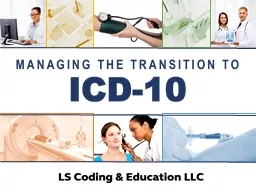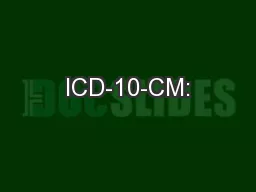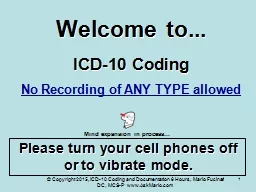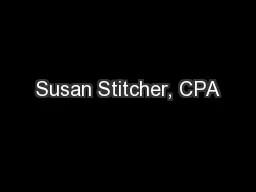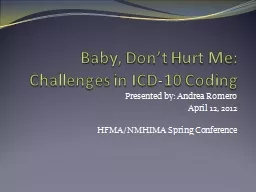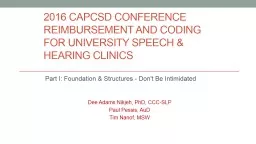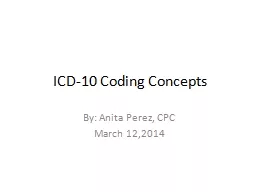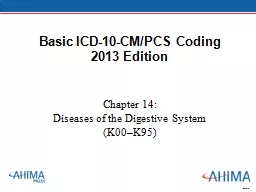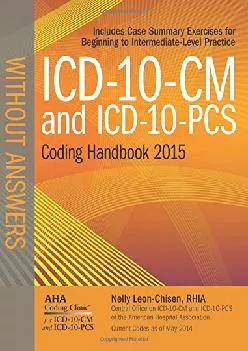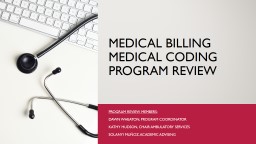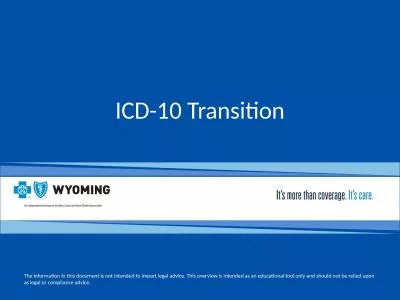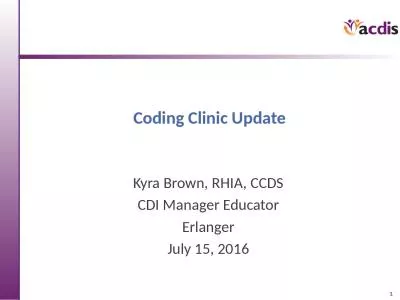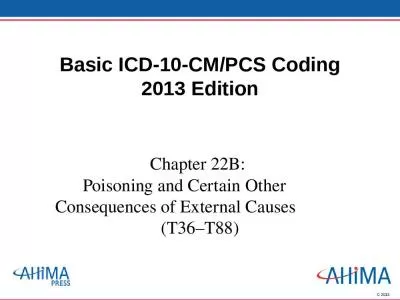PPT-The transition from the ICD-9 medical coding system to ICD-
Author : stefany-barnette | Published Date : 2016-12-12
ICD10 is set to go into effect on October 1st 2015 Once it does some of the changes that will go into effect include Increasing the number of diagnosis codes from
Presentation Embed Code
Download Presentation
Download Presentation The PPT/PDF document "The transition from the ICD-9 medical co..." is the property of its rightful owner. Permission is granted to download and print the materials on this website for personal, non-commercial use only, and to display it on your personal computer provided you do not modify the materials and that you retain all copyright notices contained in the materials. By downloading content from our website, you accept the terms of this agreement.
The transition from the ICD-9 medical coding system to ICD-: Transcript
Download Rules Of Document
"The transition from the ICD-9 medical coding system to ICD-"The content belongs to its owner. You may download and print it for personal use, without modification, and keep all copyright notices. By downloading, you agree to these terms.
Related Documents

